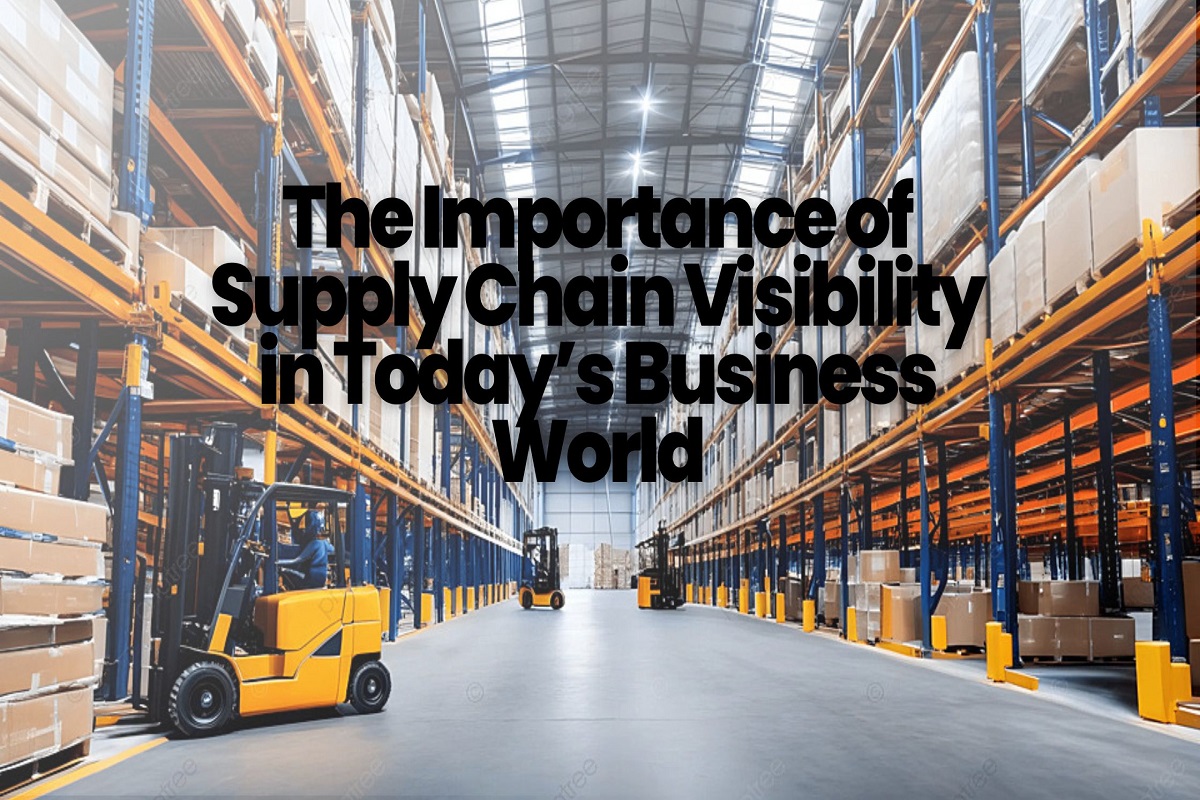In today’s fast-paced and highly competitive business environment, supply chain visibility has become a crucial factor for success. Companies are striving to enhance their operational efficiency, reduce costs, and meet growing customer expectations. Supply chain visibility (SCV) enables organizations to track and monitor the movement of goods, information, and finances across the entire supply chain. This level of transparency is essential for improving efficiency, reducing risks, and ensuring customer satisfaction.
What is Supply Chain Visibility?
Supply chain visibility refers to the ability of an organization to track real-time data and insights across its supply chain network. This includes monitoring inventory levels, transportation status, supplier performance, and demand fluctuations. The goal of SCV is to improve decision-making, enhance efficiency, and mitigate risks by having end-to-end transparency.
The Key Benefits of Supply Chain Visibility
- Improved Efficiency and Productivity: With supply chain visibility, businesses can streamline their operations by reducing bottlenecks and inefficiencies. Real-time data allows companies to optimize routes, manage inventory more effectively, and enhance overall productivity.
- Enhanced Customer Satisfaction: Customers today expect timely deliveries and real-time tracking of their orders. SCV enables businesses to provide accurate shipment tracking, minimize delays, and proactively communicate with customers about potential disruptions.
- Risk Mitigation and Crisis Management: Disruptions in the supply chain, such as natural disasters, political instability, or supplier failures, can significantly impact businesses. With enhanced visibility, organizations can quickly identify potential risks, develop contingency plans, and respond proactively to minimize disruptions.
- Cost Reduction and Waste Minimization: By tracking inventory levels and shipment movements in real time, businesses can reduce excess stock, prevent overproduction, and cut unnecessary storage and transportation costs. This leads to better resource allocation and cost savings.
- Better Compliance and Regulatory Adherence: Many industries are subject to strict regulations regarding the sourcing, transportation, and handling of goods. Supply chain visibility ensures compliance with industry standards and governmental regulations, avoiding legal penalties and enhancing corporate reputation.
Technologies Driving Supply Chain Visibility
The adoption of advanced technologies has made supply chain visibility more accessible and efficient. Some of the key technologies include:
- Internet of Things (IoT): IoT devices provide real-time tracking of shipments, temperature monitoring for perishable goods, and predictive maintenance alerts for transportation fleets.
- Blockchain Technology: Blockchain enhances transparency by providing a tamper-proof and decentralized record of transactions, ensuring authenticity and trust.
- Artificial Intelligence (AI) and Machine Learning: AI-driven analytics help predict demand fluctuations, optimize routes, and detect potential disruptions before they occur.
- Cloud Computing: Cloud-based supply chain management systems allow businesses to access data from anywhere, ensuring seamless communication and collaboration across the network.
Challenges in Achieving Supply Chain Visibility
While SCV offers numerous benefits, businesses often face challenges in implementing it effectively. Some common hurdles include:
- Data Silos: Many organizations struggle with fragmented data stored across different systems, making it difficult to gain a unified view of the supply chain.
- Integration Issues: Legacy systems and outdated technology can make it challenging to integrate new visibility solutions.
- Cybersecurity Risks: With increased digitization, supply chains are vulnerable to cyber threats, requiring robust security measures to protect sensitive information.
- Cost and Investment: Implementing advanced SCV solutions requires a significant investment in technology and infrastructure, which can be a barrier for small and medium-sized enterprises (SMEs).
How to Improve Supply Chain Visibility
To enhance SCV, businesses can adopt the following best practices:
- Leverage Technology: Implement AI, IoT, and blockchain solutions to gain real-time insights into supply chain operations.
- Enhance Collaboration: Foster better communication and collaboration with suppliers, distributors, and logistics partners.
- Invest in Data Analytics: Utilize big data and predictive analytics to anticipate demand trends, manage inventory, and optimize transportation routes.
- Standardize Processes: Establish uniform data collection and reporting standards to ensure seamless integration across systems.
- Monitor and Evaluate Performance: Regularly assess supply chain performance using key performance indicators (KPIs) to identify areas for improvement.
At Lean Supply Chain Solution, we understand that supply chain visibility is no longer a luxury but a necessity for businesses looking to remain competitive in today’s global marketplace. By embracing advanced technologies and best practices, we help companies achieve greater transparency, efficiency, and resilience in their supply chains. Our tailored solutions enhance operational performance, improve customer satisfaction, and strengthen long-term business sustainability.


